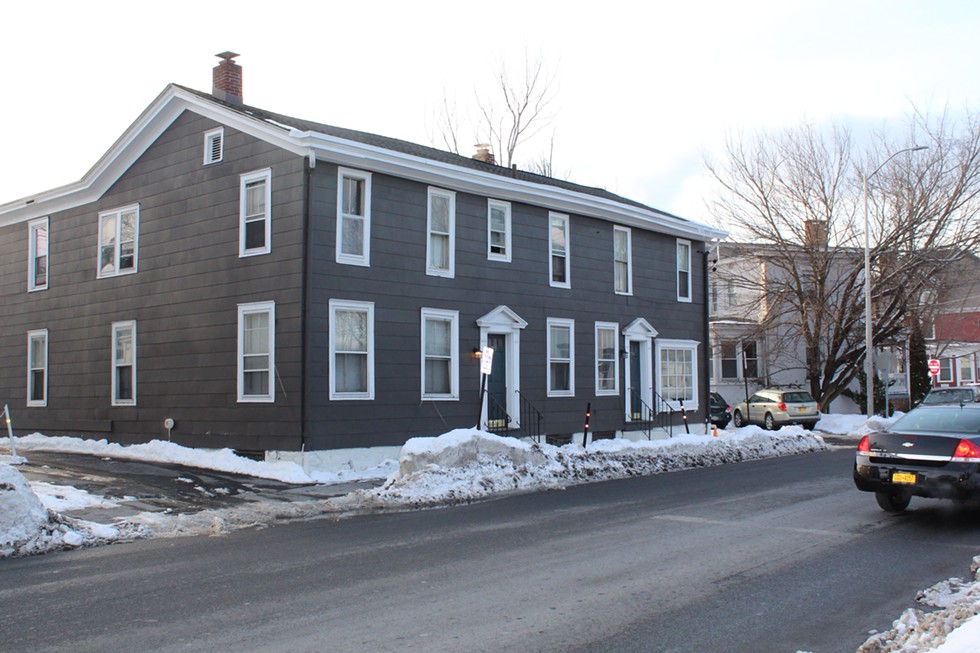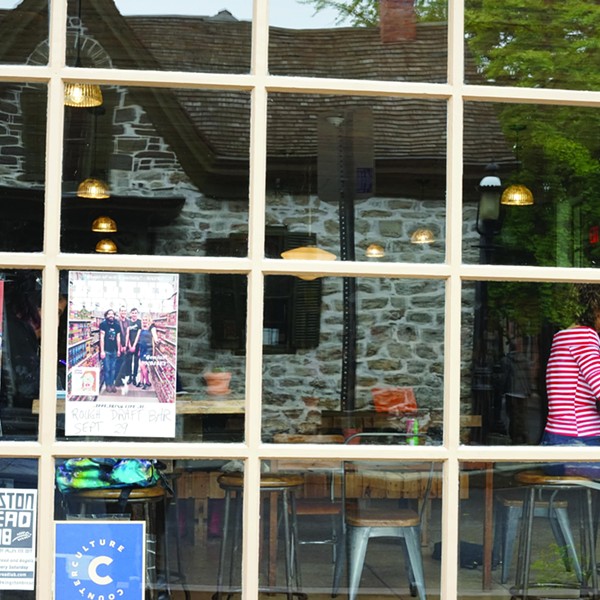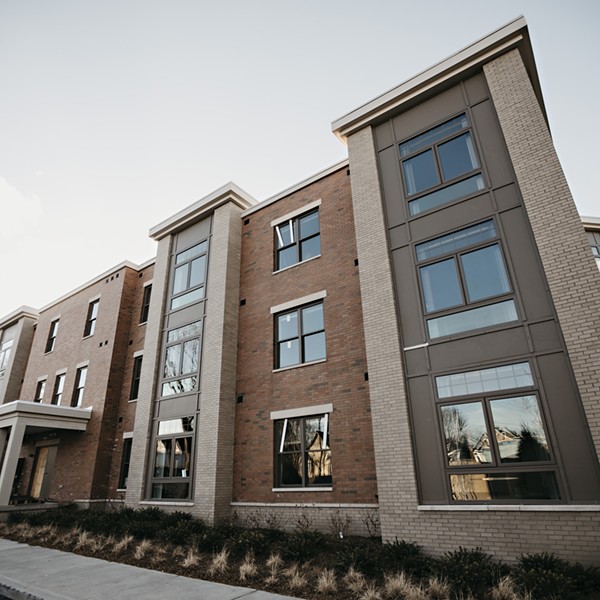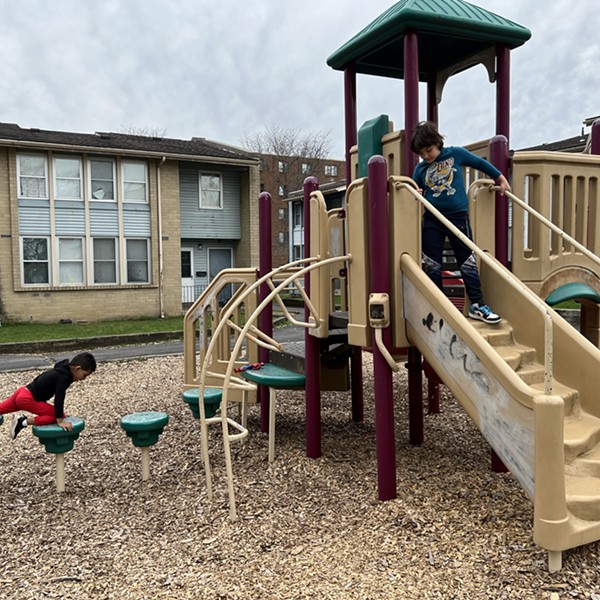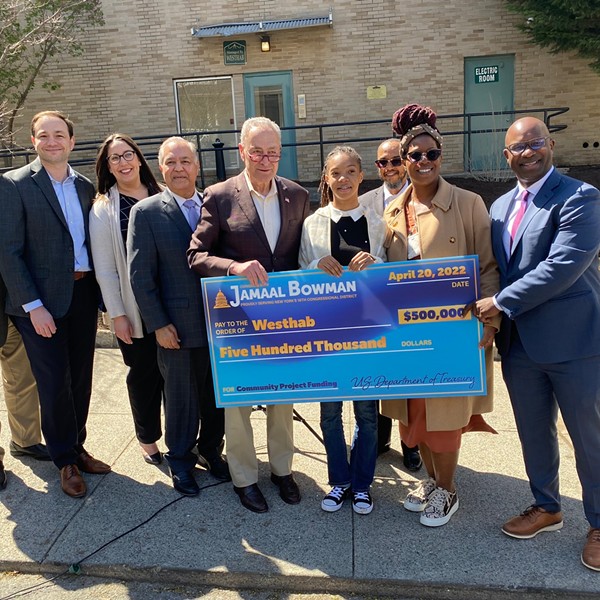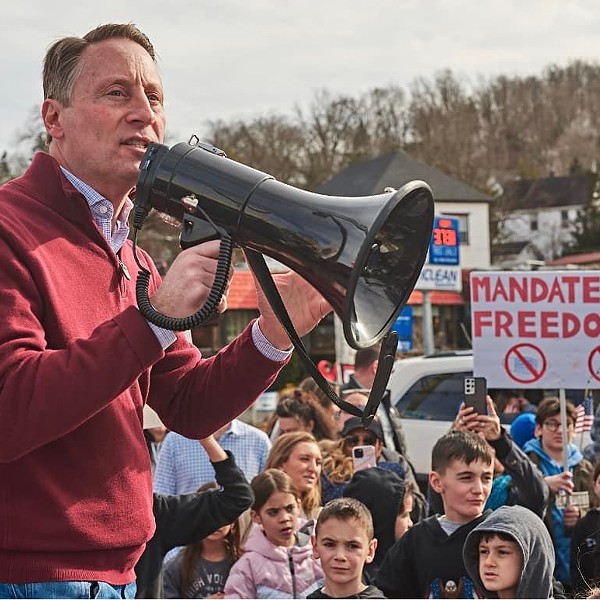Shawn Pettway’s apartment in uptown Kingston was sold on March 20, the same day Governor Andrew Cuomo announced that New York would shut down to prevent the spread of COVID-19. Housing prices had been rising as the neighborhood became the latest Hudson Valley destination for downstaters, and the new landlords bought the two-story building from Barbara and Roger Duncan for $555,000.
Pettway, who lives with his two young grandchildren in the rent-subsidized building, says not much changed for the first couple months. “Then out of the clear blue sky I get this letter saying that they’re going up on our rent.”
March 20 was also the day Governor Cuomo announced a 90-day moratorium on commercial and residential evictions. The moratorium has been extended several times, under different names.
The pandemic has put unprecedented stress on the Hudson Valley housing market, causing prices to skyrocket. But the housing crisis in the region predates the arrival of the coronavirus. Even now, the moratorium is showing cracks as the pressure builds behind it, and mass evictions could sweep the Hudson Valley when it expires.
A Crisis Years in the Making
Wealthy downstate residents began taking an interest in the Hudson Valley’s river towns at the turn of the century, and the price of housing has risen as they bought second homes or moved here full time.
Hudson, rebranded by downstate media as “the sixth borough,” saw its average rent triple in less than 20 years, pushing lower-income residents out of the city. Mayor Kamal Johnson, elected in 2019, made affordable housing central to his campaign, but an attempt to build a block of affordable apartments fell apart during negotiations over tax breaks for the project.
Forty miles downriver in Poughkeepsie, the lack of affordable housing has also been a major issue. Elizabeth Druback-Celaya, the director of strategic initiatives with Hudson River Housing, a nonprofit housing and community development organization, says discussions about gentrification and displacement have been ongoing for at least a decade. Based on her observations, those discussions have picked up in recent years, as the crisis has worsened. “The urgency started feeling more extreme,” she says.
In Ulster County, rents started rising in 2009, and have shot up with increasing speed since, according to annual surveys conducted by the county planning department. The median rent for a one-bedroom apartment rose about 30 percent in three years, from $878 in 2016 to $1,140 in 2019. The most recent annual survey, which uses census figures from several years ago, estimates that more than 55 percent of tenants in the county are “rent burdened,” meaning at least 30 percent of their income goes toward rent—the fifth-highest rate in New York’s 62 counties. The draft findings of a Housing Action Plan Study, presented to the county legislature’s Economic Development, Tourism, Housing, Planning and Transit Committee, put the number at 53 percent of renters.
“We had people being evicted on a regular basis because of the lack of sustainability in our housing market and the lack of affordability even during typical employment situations,” says Rebecca Garrard, an organizer focusing on affordable housing for Citizen Action New York.
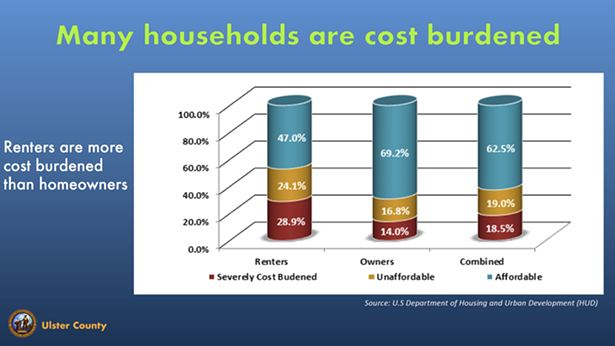
Last year, employment was anything but typical. After Governor Cuomo closed all nonessential businesses, New York’s unemployment rate, which had been at a historically low 4.1 percent, skyrocketed to 14.5 percent. The layoffs disproportionately fell on low-wage workers in the retail, entertainment, and restaurant industries, and low-wage workers are more likely to rent.
An eviction moratorium was more urgent in this recession than in others because “during a pandemic, [evictions] are a contributor to a public health crisis,” Garrard notes. That point is echoed in the language of the Tenant Safe Harbor Act, one of many iterations of the moratorium, which states that halting evictions is important “to keep New Yorkers secure in their homes and places of business at a time when the leading public health guidance in the fight against COVID-19 urges social distancing and self-isolation.”
When the virus hit New York in the spring, the Hudson Valley housing market exploded, as thousands of people with the means to do so fled New York City for less contagious environs.
In Kingston, properties were snatched up without even a walkthrough, cash up front. In Columbia County, there were intense bidding wars over properties; real estate agents described a “pandemic premium” on rentals, and prices jumped 20 percent overnight as demand lapped supply over and over.
“Housing prices are rising at the same time people are less able to afford those costs, and in more tenuous situations,” Druback-Celaya says. “We hear from folks every day who are unable to find housing—not only housing that’s affordable to them, but even remotely in the range of affordability. We’re seeing two-bedroom apartments going for over $2,000. It’s pretty tough right now.”
But the pandemic is creating a need for more housing even without taking into consideration the surge of downstaters. The walk-in shelter Hudson River Housing operates has seen “a sustained increase” in people seeking a haven for the night, Druback-Celaya says, as friends or relatives offering a couch for the night are less likely to do so for fear of contagion.
Circumventing the Moratorium
Most of the time, when tenants are displaced, it is not because they are behind on rent.
Evicting a tenant for rent arrears can be a complicated process. A tenant must miss three months of payments for a landlord to even file the case in court. Then there are costly attorneys, court dates, and months of waiting as the case winds through the judicial system.
When a landlord wants a tenant gone, they can just refuse to renew their lease. Though not an eviction, the effect on the tenant is the same: they no longer have a place to live. And there is nothing in any of the moratoria to prevent landlords from refusing to renew leases.
If a tenant whose lease is not renewed refuses to leave, the landlord can go to court and file a case for a “holdover eviction,” in the same manner they would file an eviction for nonpayment of rent. Under the current incarnation of the moratorium—the COVID-19 Emergency Eviction and Foreclosure Act, signed into law December 28—no existing eviction cases can move forward in court for 60 days, no new evictions cases can be filed provided the tenant has filed out a hardship declaration form, and no court can authorize evictions before May 1, according to the administrative order interpreting the law.
But not all of those regulations have been in place since the beginning of the pandemic. Justin Haines, who represents low-income tenants in eviction proceedings as the supervising attorney in Poughkeepsie for Legal Services of the Hudson Valley (LSHV), a nonprofit law firm, says that the different versions of the moratorium created a haphazard system.
“During the summer, we did a [continuing legal education class] for the Dutchess County Bar Association,” Haines says. “Exacting the patchwork of executive orders, administrative orders from the court, federal legislation, state legislation…it was difficult for attorneys to understand how all this stuff works together. I don’t understand how someone who doesn’t have an attorney—landlord or tenant—could figure this out.”
Shary Sanchez, the attorney-in-charge at LSHV’s Peekskill office, says many courts interpreted the Tenant Safe Harbor Act, which prevented evictions from June 30 until Cuomo signed the COVID-19 Emergency Eviction and Foreclosure Prevention Act into law in late December, as not applying to holdover evictions, only evictions because of nonpayment.
One of these courts was Poughkeepsie’s, where at times in the fall the courts were open and holdover evictions, plus some previously filed nonpayment evictions, were proceeding, Haines says. Most of the cases did not get to the stage of an actual eviction, because the moratorium would be altered by a new law or court order and adjustments had to be made to the cases.
“We had a bunch of people who were scheduled for evictions in the first week of January, and what I did on January 4 (after the most recent moratorium passed)…was reach out to all those tenants saying, ‘There’s this new law, if you can fill out a hardship declaration truthfully, then you should send it to the court, the sheriff, your landlord—let everybody know that you are deserving of the protections of this new law,’” Haines says.
Attorneys and tenants rights advocates interviewed for this article agreed that the latest version of the moratorium offered the most comprehensive protections for renters.
“But to be quite honest,” Sanchez says, “it really is going to be up to the courts and how they interpret things.” Westchester County tends to be more favorable towards tenants—“not to say that it’s like kumbaya there,” Sanchez notes—due to its proximity to New York City, where housing courts have become more tenant-friendly. In Ulster, Sullivan, and Putnam counties, the court’s interpretations “tend to not be tenant-friendly,” with LSHV attorneys having to appear in person to defend tenants until at least late December.
Pushing Through the Moratorium
Evictions cases have only been paused, not eliminated. With the moratorium limiting their ability to evict, some landlords in the Hudson Valley are resorting to pressure tactics and illegal means to try to remove their tenants.
Many are using “inhumane tactics to get rid of people,” Sanchez says, including changing the locks on tenants, sardonically referred to as “self-help evictions,” which are illegal under state law. “Hygiene and social distancing are the biggest ways to fight this pandemic, but they’re being locked away from water and shelter.”
There has also been an “uptick” in landlords calling Child Protective Services on their tenants, according to Sanchez.
In other cases, landlords have been more creative. Luckey Platt, a historic building in downtown Poughkeepsie with 140 inexpensive units, was sold early last year to a group of investors. As the pandemic hit the city, the tenants started getting notices: their leases would not be renewed. The new owners were renovating.
Eli Berkowitz, an organizer in Poughkeepsie for Community Voices Heard, a racial and economic justice organization, says tenants were offered their apartments back after the renovations were completed—with a higher price tag.
“It’s pretty clear what the plan for Luckey Platt was,” Berkowitz says. “It’s to be an anchor for the ‘revitalization’ of downtown Poughkeepsie, and that revitalization is done expressly though removing existing tenants and replacing them with higher-earning tenants.”
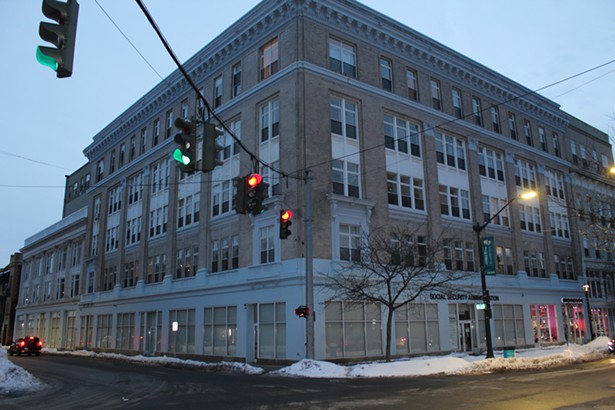
In Hudson, Kristal Heinz, an attorney specializing in landlord-tenant law, says one tenant behind on rent was offered $5,000, plus forgiveness of rent owed, to move out of her apartment. The tenant took the deal and now lives about 20 minutes outside the city.
Other landlords have taken to calling the building inspector to get an order to vacate until repairs are made, says Rashida Tyler, founder of the Real Kingston Tenants Union. “It really is worse than I’ve ever seen it in Kingston.”
Shawn Pettway agrees. His apartment is subsidized through the federal Section 8 voucher program, but he says the higher rent still makes it unaffordable. When a Section 8 landlord in Ulster County wants to raise the rent, they submit the request to RUPCO, an affordable housing nonprofit, which determines if the new amount is “rent-comparable” to properties in the surrounding community. If the proposed rent is above comparable properties, RUPCO can usually negotiate with the landlord, says Maria Wayne, the organization’s Section 8 program director.
But RUPCO could not cover the increase by Pettway’s new landlord, so his portion of the rent rose on October 1. Wayne says it is still considered affordable, since it constitutes less than 40 percent of Pettway’s income.
Pettway says he is nervous about the future, both for himself and his grandchildren Saddiq and A-yma, whom he has custody over. He has been looking for housing, but the few units that pop up are gone in days and are never affordable.
“That’s the stressful thing about the whole situation,” he says. “The not-knowing part.”
Mass Evictions
The number of tenants behind on rent in the Hudson Valley is unknown. But an analysis by the investment bank and advisory firm Stout suggests that as of mid-November, between $1.1 billion and $1.8 billion is owed in back rent statewide, and between 640,000 and 1,180,000 households were at risk of eviction.
The owed rent has only piled up since then. Eviction cases paused in court are poised to move forward when the moratorium finally ends. Amanda Sisenstein, a tenants rights advocate in New Paltz, says community groups in Ulster County are trying to plan for that eventuality.
One central demand, echoed since the early days of the pandemic, is for the state or federal government to cancel rent. The Upstate/Downstate Housing Alliance, a confederation of tenants rights groups that includes organizations based in Kingston, Hudson, and Westchester County, supports permanently canceling “all rent, mortgage and utility payments accrued during COVID-19.” And a bill introduced last summer by Democratic state Senator Julia Salazar seeks to forgive both rent and mortgage payments, but it still sits in committee.
“If there is no cancelation of rent…or substantial assistance, people are suddenly going to owe a year or more of rent who maybe still aren’t employed,” Sisenstein says. “We’re preparing how to best keep people in their homes.”
There are also calls to pair rent cancelation with mortgage relief. In fact, not doing so would “kill landlords,” says Heinz. “At some point we have to provide relief for landlords or the housing market is just going to implode. You’re going to have people being evicted because they haven’t paid, you’re going to have buildings that are going to be foreclosed on—who’s going to take in the tenant that’s been evicted, especially without any sort of good rental history?”
There is also hope for relief in the next federal COVID-19 stimulus bill, which is currently being hashed out by Congress for a vote by the end of the month. Owed rent has been part of the negotiations, and a draft plan proposes $25 billion for rental relief, according to Bloomberg News.
Meanwhile, some municipalities are trying to solve the problem on the community level. Spark of Hudson, a nascent charitable group, is spearheading negotiations that would allow Hudson tenants behind on rent to pay 50 percent of what they owe and have the rest forgiven by the landlord. Up to 50 tenants stand to benefit from the effort, and many landlords have expressed gratitude during negotiations, says Joan E. Hunt, executive director of Greater Hudson Promise Neighborhood, a community nonprofit aiding the initiative. “We already know that there’s a housing crisis in Hudson, so anything we can do to keep families here, in their community—we’re super happy to help with.”
When I asked Hunt about the tenant behind on rent who was offered money to move elsewhere and whether she thought these kinds of private buyouts were good, she paused, then said it was “complicated.”
“Say you’ve grown up in Hudson your whole life—or any of the river towns,” she says. “That’s your community, that’s what you know, that’s where your family is, your school community, whatever. People…are forced to live in the most deplorable conditions because of how important community is to them, and we cannot underestimate that when talking about housing. Yes, it’s about affordability and access, etc. But it’s also about being in a community where you feel supported and connected.”







